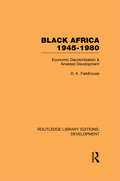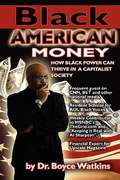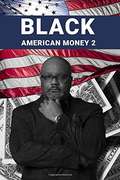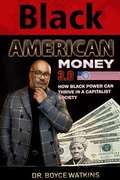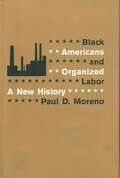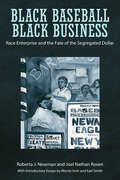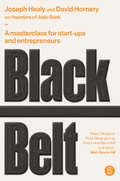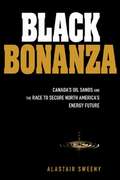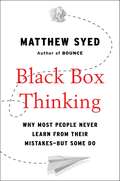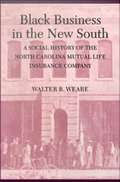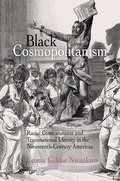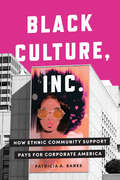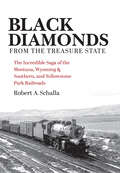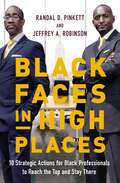- Table View
- List View
Bjarke Ingels Group
by Boris Groysberg Aldo SesiaDanish-born Bjarke Ingels is regarded as a giant in the field of architecture. He started his firm - the Bjarke Ingels Group (BIG) - in 2005 in Copenhagen. Fourteen years later, the firm has additional offices in New York City, London, and Barcelona and employs over 500 people. BIG is known for what Ingels calls "hedonistic sustainability," and its designs include a waste-to-energy treatment plant replete with a ski slope, and a multi-storied residential building where residents can bike to their apartments. In 2019, the firm is experiencing growth pains. Demands on Ingels and the firm's infrastructure are intensifying. Ingels and BIG's CEO Sheela Maini S gaard, along with the firm's other partners, know the firm needs to adapt - organizationally and operationally - to be successful in the future. The case study provides background on Ingels, the creation and evolution of BIG, and the challenges the firm and its leadership face.
BlaBlaCar: The Road Ahead...
by Emilie Billaud Karim R. Lakhani Arun Sundararajan Caroline CaltagironeIn 2017, the co-founders of BlaBlaCar—the world’s largest long-distance carpooling company—reflected on the evolution of their venture and the way forward. BlaBlaCar had reached critical mass and size; yet staying still was not going to be enough to be relevant and competitive in the hyper competitive sharing economy sector. The co-founders felt that the time was now to capitalize on the trust that the platform had built with its members and explore adjacent opportunities. The options in front of them represented a wide variety of ways to grow, but how should the team prioritize and figure out which opportunities represented a viable business strategy for their company?
BlaBlaCar: The Road Ahead...
by Emilie Billaud Karim R. Lakhani Arun Sundararajan Caroline CaltagironeIn 2017, the co-founders of BlaBlaCar-the world's largest long-distance carpooling company-reflected on the evolution of their venture and the way forward. BlaBlaCar had reached critical mass and size; yet staying still was not going to be enough to be relevant and competitive in the hyper competitive sharing economy sector. The co-founders felt that the time was now to capitalize on the trust that the platform had built with its members and explore adjacent opportunities. The options in front of them represented a wide variety of ways to grow but how should the team prioritize and figure out which of the opportunities represented a viable business strategy for their company?
Black & Decker Corp. (A): Power Tools Division
by Robert J. DolanPresents Black & Decker's performance against a Japanese competitor and others in the power tools market. Black & Decker is anxious to regain its market share leadership in particular segments of the market.
Black & Decker Corp. (B): "Operation Sudden Impact"
by Robert J. DolanDescribes Black & Decker's strategy for the tradesmen market.
Black & Decker Corp. (C): "Operation Sudden Impact" Results--1992-94
by Robert J. DolanDescribes the initial results of Black & Decker's strategy in the United States.
Black & Decker Corp.: Household Products Group, Brand Transition
by John A. Quelch Cynthia A. Bates Minette E. DrumwrightThis rewritten version differs from Black & Decker Corp.: Household Products Group (A1) in two ways: 1) It has an explicit decision focus. Homa must decide on a program to transfer the Black & Decker name to GE small appliances; and 2) The detailed information concerning advertising, promotion programs, purchase allowances, volume rebates, dating discounts, cooperative advertising, and consumer rebates has been condensed.
Black & Decker Corp.: Spacemaker Plus Coffeemaker (A)
by N. Craig SmithA fire is reported in a Black & Decker Spacemaker Plus Coffeemaker. This newly introduced product is a "Key Introduction" for Black & Decker's Household Product Group (HPG). HPG's president has to decide whether the product should be recalled and, if so, how the recall should be implemented. Teaching objectives include: 1) managing a product recall, 2) ethical considerations in product safety and product recalls, and 3) the meaning of customer care.
Black Africa 1945-1980: Economic Decolonization and Arrested Development (Routledge Library Editions: Development)
by D K FieldhouseIn what ways did economic considerations affect the decision by Britain and France to make their Black African colonies independent? Why were early expectations that independence would lead to rapid and sustained economic development in Africa for the most part disappointed? This title, originally published in 1986, seeks to tackle these two important and strongly debated issues. The main aim and value of the book is to take a broad view of this huge subject, pulling together material on most parts of Black Africa south of the Sahara and north of the Limpopo so that the problem can be seen as a whole. It takes account of a wide range of possible and actual factors which have influenced African economic development, weaving them into a single analysis, including the colonial inheritance, the impact of the fluctuating international economy, policies adopted by African governments and indigenous factors such as climate, drought and human resources. The book is written to be understood without difficulty by non-specialists and is intended to act as an introduction to its subject for university students.
Black American Money
by Boyce D. WatkinsBlack American Money How black Power Can Thrive in a Capitalist Society
Black American Money 2
by Boyce WatkinsOne of the greatest challenges for the African American community is a severe lack of power. Like caged animals in the zoo, millions of black people in America and across the world often feel that our lives are controlled by other people or that opportunities only enter our lives when they are created by our oppressors. This debilitating mindset can lead to hopelessness, depression and decision-making that is driven by fear rather than desire. Instead of believing that we possess the ability to improve our lives, we simply wait and hope that White Americans will one day have a change of heart. Black American Money is written to kill the victim mentality and help us to see the world for what it really is. There is no power for the victim, the beggar, or the one who simply prays, hopes and waits for their oppressor to give them what they need. According to Finance PhD and noted scholar Dr Boyce Watkins, the world is never going to be nicer to black people and whites are never going to give us enough opportunity to sustain the masses. Instead, they will only volunteer enough crumbs to keep us under control and offer superficial congratulations for meaningless accomplishments within the pre-approved context of white supremacist institutions. It is only through proactive positioning, extensive preparation and institution building that black people can ever have any true power in America and beyond. Through a series of compelling essays and thought-provoking analysis, Dr Watkins hits the nail on the head in ways that only he can do. This book will shape your thinking, rivet your mindset and lead you to a whole new way of seeing racial inequality in America and beyond. This book will make you a champion.
Black American Money 3.0: How Black Power Can Thrive in a Captilist Society
by Boyce Watkins<p>Black Wealth is expected to drop to zero for half of all black families by the year 2053. This means that half of our community will be in the negative, and the other half will be positive. Those who embrace economic education will be the ones who are on the positive side of this statistic, largely because they've avoided the economic traps that exist in our society. <p>The traps consist of but are not limited to: Ridiculous amounts of student loan debt, marketing that continuously reinforces the message of extensive consumption, a culture built on job seeking rather than job creation, a lack of interest in stock/bond investing, renting rather than ownership, inadequate life insurance with virtually no estate planning, and much, much more.While I work hard to sound the warning bell for the entire black community, our voices are often drowned out by messages coming from corporate media, problematic politicians, and a broken educational system which is determined to keep our people in the midst of economic slavery. <p>I have taught Finance to college students for 25 years at several major universities. I've spent thousands of hours studying the problems that are specific to black people and believe that I have developed solutions that you can implement right now, TODAY, within your own family. These are not get-rich-quick or fly-by-night solutions. Instead, they are long-term wealth-building prototypes that will yield results over several decades of continuous activity. <p>Those who embrace financial literacy in their households will not be on the negative side of the statistic that I mentioned above. Those who save and invest won't have the same financial problems as many others. Those who make long-term plans for their children rarely watch their kids struggle. The future is owned by those who prepare for it today.</p>
Black Americans and Organized Labor: A New History
by Paul D. MorenoIn Black Americans and Organized Labor, Paul D. Moreno offers a bold reinterpretation of the role of race and racial discrimination in the American labor movement. Moreno applies insights of the law-and-economics movement to formulate a powerfully compelling labor-race theorem of elegant simplicity: White unionists found that race was a convenient basis on which to do what unions do -- control the labor supply. Not racism pure and simple but "the economics of discrimination" explains historic black absence and under-representation in unions. Moreno's sweeping reexamination stretches from the antebellum period to the present, integrating principal figures such as Frederick Douglass and Samuel Gompers, Isaac Myers and Booker T. Washington, and W. E. B. Du Bois and A. Philip Randolph. He traces changing attitudes and practices during the simultaneous black migration to the North and consolidation of organized labor's power, through the confusing and conflicted post-World War II period, during the course of the civil rights movement, and into the era of affirmative action. Maneuvering across a wide span of time and a broad array of issues, Moreno brings remarkable clarity to the question of the importance of race in unions. He impressively weaves together labor, policy, and African American history into a cogent, persuasive revisionist study that cannot be ignored.
Black Baseball, Black Business: Race Enterprise and the Fate of the Segregated Dollar
by Roberta J. Newman Joel Nathan RosenWinner of the 2014 Robert W. Peterson Award for Excellence in Negro League Research from the Jerry Malloy Negro League Conference, sponsored by Negro Leagues Committee of the Society for American Baseball Research Roberta J. Newman and Joel Nathan Rosen have written an authoritative social history of the Negro Leagues. This book examines how the relationship between black baseball and black businesses functioned, particularly in urban areas with significant African American populations—Chicago, Detroit, Indianapolis, Kansas City, Newark, New York, Philadelphia, and more. Inextricably bound together by circumstance, these sports and business alliances faced destruction and upheaval. Once Jackie Robinson and a select handful of black baseball’s elite gained acceptance in Major League Baseball and financial stability in the mainstream economy, shock waves traveled throughout the black business world. Though the economic impact on Negro League baseball is perhaps obvious due to its demise, the impact on other black-owned businesses and on segregated neighborhoods is often undervalued if not outright ignored in current accounts. There have been many books written on great individual players who played in the Negro Leagues and/or integrated the Major Leagues. But Newman and Rosen move beyond hagiography to analyze what happens when a community has its economic footing undermined while simultaneously being called upon to celebrate a larger social progress. In this regard, Black Baseball, Black Business moves beyond the diamond to explore baseball’s desegregation narrative in a critical and wide-ranging fashion.
Black Belt: A masterclass for start-ups and entrepreneurs
by Joseph Healy David HorneryDisillusioned with the four big Australian banks' culture and strategy, Joseph Healy and David Hornery started thinking about a startup that would improve and disrupt the immovable banking sector. Although they were self-professed ‘ no spring chickens' who fell outside of the usual millennial startup entrepreneur demographic, they forged a plan to start a new bank that would service small and medium-sized businesses (a sector the big banks were neglecting) in a highly regulated industry monopolised by four of Australia' s biggest companies. Inspired by the Netflix mantra ‘ that will never work' , Joseph and David founded Judo Bank in 2016 and disrupted the Australian banking market against all odds. The name is a nod to the fact that in judo, the smaller, weaker person can overpower a stronger opponent through the efficient use of energy. In Black Belt the authors share keys lessons from the Judo journey and their decades in business prior to the startup. This is a true masterclass in planning, launching and scaling a business.
Black Belt: Martial Teachings for the Common Life
by Hugo Angelo SilvaOriental culture and the peculiarity of its principles of life, quite different from Western values, are guided by a logic of balance, management of strengths and fragilities, respect, nobility and the search for harmony between opposites, in all aspects of life of the human being, on a professional, personal and spiritual level. Through the analysis of the 20 principles of Karate-Do, written by Gichin Funakoshi, the reader is guided to a set of reflections that can help to change the way they look and experience the most mundane situations of the day, in an inspiring, constructive and harmonious It is fundamental to know ourselves first, to understand our strengths and weaknesses, qualities and defects, in a real constant analysis of ourselves, in order to live with our own adversities, so that we can better evaluate our surroundings and overcome our challenges, as if it were a combat. A book that will help you grow professionally and beyond. For all who seek to know new strands of oriental knowledge from a martial perspective.
Black Bonanza: Canada's Oil Sands and the Race to Secure North America's Energy Future
by Alastair SweenyWhat if Canada 's so-called environmental nightmare was really an engineering triumph and the key to a stable and sustainable future? For years, Canadians have been hearing nothing but bad news out of the Athabasca Oil Sands. From 20th Century economists decrying it as a perpetual money-loser in the face of more easily-extracted foreign oil to green groups around the world declaring it the world's worst industrial enterprise, sometimes it seems as though no good could ever come from this so-called dirty resource. But what if developing Canada's Oil Sands was the key to bridging the gap between current petroleum-based economies and the alternative energies that aren't ready for market yet? What if it meant eliminating the threat of Peak Oil and providing economic stability not just for Canada and the rest of North America, but for the world? And what if the environmental costs of the resource were both not nearly as dire as some would have you believe, but currently better than many other options with the industry already making huge advances in sustainability, energy use and water reclamation? That's exactly the case that Alastair Sweeny, author of BlackBerry Planet, argues is at the core of the Athabasca Sands: a bright future. By digging into the past, present and future of oil sands technology, Sweeny cuts through the hype and hysteria and makes a solid and engaging case that the Sands aren't the environmental boogeyman set to destroy humanity, but rather our best hope for a truly stable and sustainable future.
Black Box Thinking
by Matthew SyedNobody wants to fail. But in highly complex organizations, success can happen only when we confront our mistakes, learn from our own version of a black box, and create a climate where it's safe to fail. We all have to endure failure from time to time, whether it's underperforming at a job interview, flunking an exam, or losing a pickup basketball game. But for people working in safety-critical industries, getting it wrong can have deadly consequences. Consider the shocking fact that preventable medical error is the third-biggest killer in the United States, causing more than 400,000 deaths every year. More people die from mistakes made by doctors and hospitals than from traffic accidents. And most of those mistakes are never made public, because of malpractice settlements with nondisclosure clauses.For a dramatically different approach to failure, look at aviation. Every passenger aircraft in the world is equipped with an almost indestructible black box. Whenever there's any sort of mishap, major or minor, the box is opened, the data is analyzed, and experts figure out exactly what went wrong. Then the facts are published and procedures are changed, so that the same mistakes won't happen again. By applying this method in recent decades, the industry has created an astonishingly good safety record. Few of us put lives at risk in our daily work as surgeons and pilots do, but we all have a strong interest in avoiding predictable and preventable errors. So why don't we all embrace the aviation approach to failure rather than the health-care approach? As Matthew Syed shows in this eye-opening book, the answer is rooted in human psychology and organizational culture. Syed argues that the most important determinant of success in any field is an acknowledgment of failure and a willingness to engage with it. Yet most of us are stuck in a relationship with failure that impedes progress, halts innovation, and damages our careers and personal lives. We rarely acknowledge or learn from failure--even though we often claim the opposite. We think we have 20/20 hindsight, but our vision is usually fuzzy.Syed draws on a wide range of sources--from anthropology and psychology to history and complexity theory--to explore the subtle but predictable patterns of human error and our defensive responses to error. He also shares fascinating stories of individuals and organizations that have successfully embraced a black box approach to improvement, such as David Beckham, the Mercedes F1 team, and Dropbox.From the Hardcover edition.
Black Business in the New South: A Social History of the North Carolina Mutual Life Insurance Company
by Walter B. WeareAt the turn of the century, the North Carolina Mutual Life Insurance Company became the "world's largest Negro business. " Located in Durham, North Carolina, which was known as the "Black Wall Street of America," this business came to symbolize the ideas of racial progress, self-help, and solidarity in America. Walter B. Weare's social and intellectual history, originally published in 1973 (University of Illinois Press) and updated here to include a new introduction, still stands as the definitive history of black business in the New South. Drawing on a wide range of sources--including personal papers of the company's leaders and oral history interviews--Weare traces the company's story from its ideological roots in the eighteenth century to its economic success in the twentieth century.
Black Caucus Groups at Xerox Corp. (A)
by Caitlin Deinard Raymond A. FriedmanIn 1970 Xerox had a very progressive affirmative action program yet, once hired, black employees faced serious problems, due both to overt discrimination and to their exclusion from the informal networks of support, information and mentoring that the other salespeople shared. The black employees responded by establishing seven independent support groups around the United States. These black caucuses functioned as both self-help groups to prepare black employees for promotion and as pressure groups to push for policy changes within Xerox. In 1974 Xerox fears the caucuses are forming a national organization. Students must decide how to respond to this potentially dangerous situation.
Black Cosmopolitanism
by Ifeoma Kiddoe NwankwoWhat are the perceived differences among African Americans, West Indians, and Afro Latin Americans? What are the hierarchies implicit in those perceptions, and when and how did these develop? For Ifeoma Nwankwo the turning point came in the wake of the Haitian Revolution of 1804. The uprising was significant because it not only brought into being the first Black republic in the Americas but also encouraged new visions of the interrelatedness of peoples of the African Diaspora. Black Cosmopolitanism looks to the aftermath of this historical moment to examine the disparities and similarities between the approaches to identity articulated by people of African descent in the United States, Cuba, and the British West Indies during the nineteenth century.In Black Cosmopolitanism, Nwankwo contends that whites' fears of the Haitian Revolution and its potentially contagious nature virtually forced people of African descent throughout the Americas who were in the public eye to articulate their stance toward the event. While some, like William Wells Brown in his slave narrative, chose not to mention the existence of people of African heritage in other countries, others, like David Walker, embraced the Haitian Revolution and the message that it sent. Particularly in print, people of African descent had to decide where to position themselves and whether to emphasize their national or cosmopolitan, transnational identities.Through readings of slave narratives, fiction, poetry, nonfiction, newspaper editorials, and government documents that include texts by Frederick Douglass, the freed West Indian slave Mary Prince, and the Cuban poets Placido and Juan Francisco Manzano, Nwankwo explicates this growing self-consciousness about publicly engaging other peoples of African descent. Ultimately, she contends, they configured their identities specifically to counter not only the Atlantic power structure's negation of their potential for transnational identity but also its simultaneous denial of their humanity and worthiness for national citizenship.
Black Culture, Inc.: How Ethnic Community Support Pays for Corporate America (Culture and Economic Life)
by Patricia A. BanksA surprising and fascinating look at how Black culture has been leveraged by corporate America. Open the brochure for the Alvin Ailey American Dance Theater, and you'll see logos for corporations like American Express. Visit the website for the Apollo Theater, and you'll notice acknowledgments to corporations like Coca Cola and Citibank. The Martin Luther King, Jr. Memorial and the National Museum of African American History and Culture, owe their very existence to large corporate donations from companies like General Motors. And while we can easily make sense of the need for such funding to keep cultural spaces afloat, less obvious are the reasons that corporations give to them. In Black Culture, Inc., Patricia A. Banks interrogates the notion that such giving is completely altruistic, and argues for a deeper understanding of the hidden transactions being conducted that render corporate America dependent on Black culture. Drawing on a range of sources, such as public relations and advertising texts on corporate cultural patronage and observations at sponsored cultural events, Banks argues that Black cultural patronage profits firms by signaling that they value diversity, equity, and inclusion. By functioning in this manner, support of Black cultural initiatives affords these companies something called "diversity capital," an increasingly valuable commodity in today's business landscape. While this does not necessarily detract from the social good that cultural patronage does, it reveals its secret cost: ethnic community support may serve to obscure an otherwise poor track record with social justice. Banks deftly weaves innovative theory with detailed observations and a discerning critical gaze at the various agendas infiltrating memorials, museums, and music festivals meant to celebrate Black culture. At a time when accusations of discriminatory practices are met with immediate legal and social condemnation, the insights offered here are urgent and necessary.
Black Diamonds from the Treasure State: The Incredible Saga of the Montana, Wyoming & Southern, and Yellowstone Park Railroads (Railroads Past and Present)
by Robert A. SchallaIn the late 19th century, railroads played a crucial role in the development of Montana's economy. Robert A. Schalla examines early efforts to bring rail transport to the New World Mining District near the northeast corner of Yellowstone National Park and Red Lodge–Bear Creek Coal Field in south-central Montana. The saga began with a chance discovery in 1866 and follows the exploits of individuals who worked to bring rail transport to the mines of southern Montana. Starting with Northern Pacific's unsuccessful efforts to build a railroad through Yellowstone, this story follows the struggles of various privately financed schemes to develop the vast mineral wealth of these two regions. A youthful entrepreneur from Milwaukee succeeded in financing a railroad to the coal fields, but his plan to extend the line to the national park runs afoul of Howard Elliott, president of the Northern Pacific, who was determined to drive him out of business. The story dives into the motivations and background of these individuals and their ultimate triumphs and failures. The completion of the Montana, Wyoming & Southern Railroad (MW&S) in 1906 resulted in the creation of three new towns and six separate mining operations. The MW&S was one of the few privately owned lines in Montana that, despite forces aligned against it, maintained its independence until it was abandoned. For nearly fifty years it formed an important part of the state's economy as the Bear Creek mines supplied private, commercial, and industrial consumers with some of the highest-quality coal in the state.
Black Edge: Inside Information, Dirty Money, and the Quest to Bring Down the Most Wanted Man on Wall Street
by Sheelah KolhatkarThe story of the billionaire trader Steven A. Cohen, the rise and fall of his hedge fund, SAC Capital, and the largest insider trading investigation in history—for readers of The Big Short, Den of Thieves, and Dark Money. The rise over the last two decades of a powerful new class of billionaire financiers marks a singular shift in the American economic and political landscape. Their vast reserves of concentrated wealth have allowed a small group of big winners to write their own rules of capitalism and public policy. How did we get here? Through meticulous reporting and powerful storytelling, New Yorker staff writer Sheelah Kolhatkar shows how Steve Cohen became one of the richest and most influential figures in finance—and what happened when the Justice Department put him in its crosshairs. Cohen and his fellow pioneers of the hedge fund industry didn’t lay railroads, build factories, or invent new technologies. Rather, they made their billions through speculation, by placing bets in the market that turned out to be right more often than wrong—and for this they have gained not only extreme personal wealth but formidable influence throughout society. Hedge funds now manage nearly $3 trillion in assets, and competition between them is so fierce that traders will do whatever they can to get an edge. Cohen was one of the industry’s greatest success stories. He mastered poker in high school, went off to Wharton, and in 1992 launched SAC Capital, which he built into a $15 billion empire, almost entirely on the basis of his wizardlike stock trading. He cultivated an air of mystery, reclusiveness, and extreme excess, building a 35,000 square foot mansion in Greenwich, Connecticut, and amassing one of the largest private art collections in the world. On Wall Street, Cohen was revered as a genius. That image was shattered when SAC became the target of a sprawling, seven-year government investigation. Labeled by prosecutors as a “magnet for market cheaters” whose culture encouraged the relentless hunt for “edge”—and even “black edge,” or inside information—SAC was ultimately indicted in connection with a vast insider trading scheme, even as Cohen himself was never charged. Black Edge offers a revelatory look at the gray zone in which so much of Wall Street functions, and a window into the transformation of the U.S. economy. It’s a riveting, true-life legal thriller that takes readers inside the government’s pursuit of Cohen and his employees, and raises urgent questions about the power and wealth of those who sit at the pinnacle of modern Wall Street. Advance praise for Black Edge“Well-written, with pointed characterizations of the ambitious players and their motives, this book is highly recommended for readers interested in finance, crime, and politics.”—Library Journal (starred review) “A tour de force of groundbreaking reporting and brilliant storytelling, a revealing inside account of how the Feds track a high-profile target—and, just as important, an unsettling portrayal of how Wall Street works today.”—Jeffrey Toobin, New York Times bestselling author of American Heiress “Black Edge is not just a work of major importance, it is also addictively readable—and horrifyingly compelling.”—Jane Mayer, New York Times bestselling author of Dark Money “Fast-paced and filled with twists, Black Edge has the grip of a thriller.”—David Grann, New York Times bestselling author of The Lost City of Z
Black Faces in High Places: 10 Strategic Actions for Black Professionals to Reach the Top and Stay There
by Randal D. Pinkett Jeffrey A. RobinsonGOLD MEMBER WINNER — LIVING NOW BOOK AWARD: SPIRITUAL LEADERSHIP and eLIT BOOK AWARD: BUSINESS AUDIOBOOKA timely resource for Black professionals on how to rise to the top of their organizations or industries and, just as importantly, to stay there.Black Faces in High Places is the essential guide for Black professionals who are moving up through their organizations or industries but need a roadmap for how to get to the top and stay there. Based on the authors' considerable experiences in business, in the public eye, and as a minority, the book shows how African-American professionals can (and must) think and act both entrepreneurially and "intrapreneurially".In this book, you will: Expand yourself beyond your comfort zone Recognize and demonstrate the four facets of excellenceBuild beneficial relationships and powerful networksIdentify different mentors and learn from others' experiencesDiscover ways of working with others to facilitate collective action Black Faces in High?Places highlights the experiences of other Black faces in high places who were able to navigate various crossroads, reach the top, and stay there, including insights from President Barack and First Lady Michelle Obama, Oprah Winfrey, Cathy Hughes, Angela Glover Blackwell, Ken Chenault, Senator Cory Booker, Geoffrey Canada, and others.

